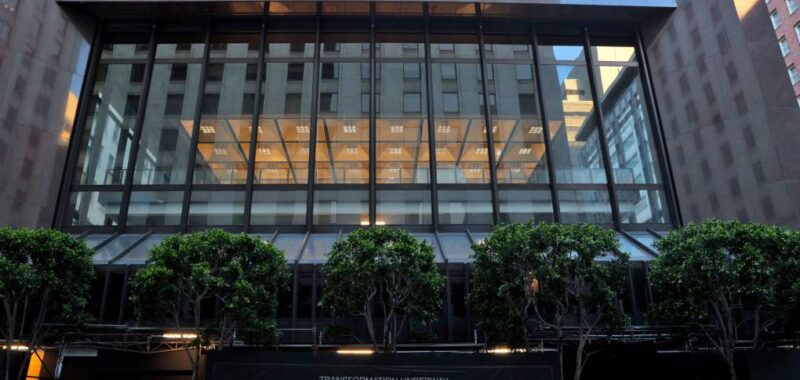The non-collecting institution will reopen on two floors of the five-story, 73,000-square-foot building on Oct. 25, more than doubling its current gallery space. And, through a deal with Vornado, it will do so at virtually no cost to itself: The ICA will enjoy free rent and utilities for two years.
Gass emphasized the benefits the ICA will bring to the immediate neighborhood, and to downtown San Francisco at large. “What we’ve seen contemporary art be able to do in so many cities and neighborhoods [is] drive traffic and have economic impact,” she said, “because people come to an arts organization and they go get a meal, and they go get a drink.”
While the Trump Organization does not have decision-making power related to property, it has profited greatly from its partnership with Vornado, which includes another co-owned building in Manhattan. In 2021, Bloomberg reported that the former president was positioned to share a windfall of around $617 million after a bond sale to refinance 555 California St.
Largely funded by Silicon Valley tech money, ICA San Francisco set forth a bold mission to promote “constant reinvention in the realm of contemporary art” — and, just as importantly, to make that experimental work accessible to all. In the two years since its launch, the museum has largely made good on those promises, hosting eight high-profile exhibitions, all with free admission, plus dozens of additional pop-ups and educational programs.
During its time in the Dogpatch, the ICA hosted exhibitions spotlighting both prominent international artists and up-and-coming locals. One installation featured hand-sewn banners inspired by traditional tattoo designs; another asserted Black women’s right to rest and leisure. The museum also contributed to the once mostly industrial area’s burgeoning identity as the city’s “artsiest neighborhood.”
The ICA will launch its new Financial District space with three openings: The Poetics of Dimensions, curated by Larry Ossei-Mensah; Maryam Yousif: Riverbend, a ceramics exhibition that references Mesopotamian and Assyrian mythology and Iraqi pop culture; and a solo presentation by New York artist Kathleen Ryan.

